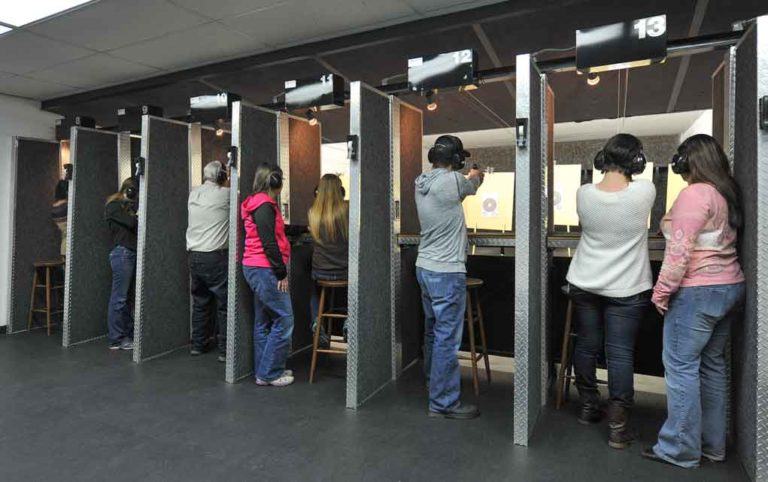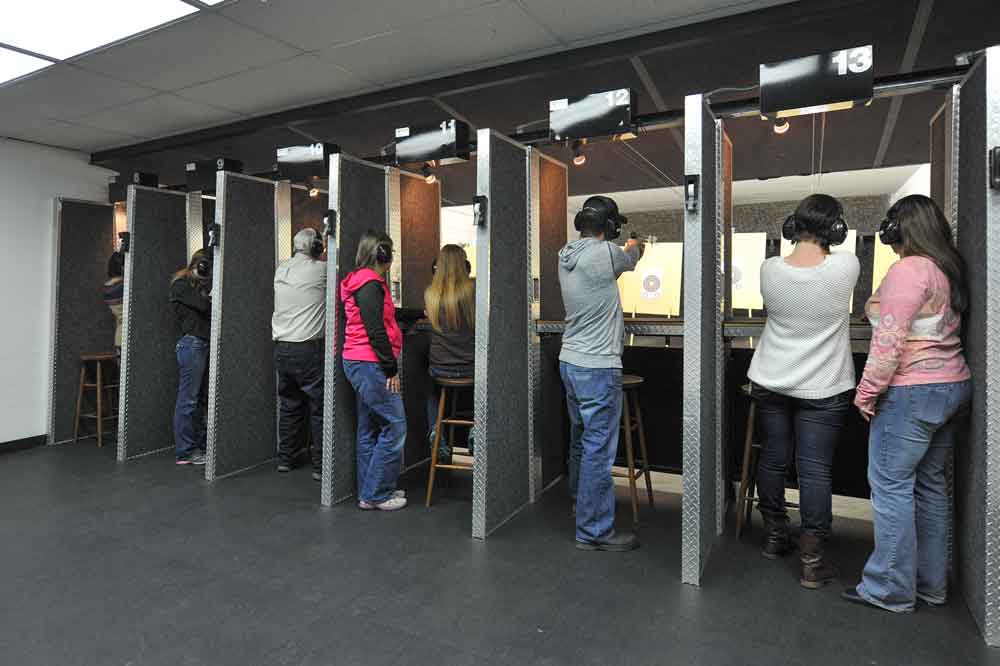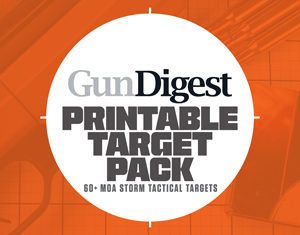
Sadly, there just aren’t a lot of shooting ranges that are conducive to good defensive shooting practice. If you have a range nearby that meets the following criteria, you’re in luck — and also in the minority.
An ideal shooting range would allow you:
- free movement relative to the target;
- to set up targets in at least a 270-degree spread;
- to shoot those targets on angles;
- to draw from your holster;
- to fire as many shots as you deemed necessary;
- to fire those shots at the fastest speed you could muster while still getting the hits;
- to look behind you while safely holding a loaded gun; and
- to shoot past dusk, or to turn off the lights to simulate low-light conditions.

As I said, that describes precious few shooting ranges. Most ranges restrict your activities in some way: don’t allow you to use “humanoid” targets; require you to set up targets in front of one specific berm; require you to always be at right angles to the targets, never shooting ‘cross lane’; don’t allow drawing from a holster; restrict the number of rounds per string; specify a specific shooting speed; don’t allow you to do anything other than look downrange when holding a firearm; and don’t allow shooting past a certain time or with the lights turned low. Indoor ranges are the most likely to have these kinds of limitations.
The reason for these kinds of restrictions comes down to either liability concerns or shooting prejudice. The liability part is somewhat understandable: The range can’t verify the training level of everyone present, and since most shooters are, in fact, untrained (or under-trained), they enact and enforce strict range rules to prevent accidents. While I don’t like those kinds of places, I do understand their concerns.
It’s the ranges with shooting prejudices I dislike. What do I mean by this? Those ranges, usually run by gun clubs, restrict certain activities because they’re not somehow proper or polite. I once knew a board member of a gun club who didn’t want anyone to use even a vaguely human silhouette because he thought guns were to be used strictly for hunting game animals. Some don’t like rapid fire because it’s not done in Olympic bullseye or trap shooting. If a certain interest in the shooting community doesn’t happen to be their interest, they’ll use their power of regulation to prevent it from happening on their turf.

Either way, any restriction is going to affect how and what you’re able to train. For those people whose only choice is an extremely restricted range (no drawing, no rapid fire, no more than a fixed number of rounds in the magazine), here are some ideas to spur further creativity on your part:
- On ranges where drawing from a holster isn’t allowed, very often you can substitute getting the gun out of a case, loading it rapidly, and shooting. This can simulate a home defense scenario where you’re retrieving your gun from a quick access safe.
- For those where ‘rapid fire’ isn’t allowed (usually defined as more than one round per second), you can work on a rapid first shot response. Since these ranges usually don’t allow drawing from a holster, either, start with the gun in a high ready position (gun pointed downrange, close to your body at roughly the base of the sternum, elbows tight in to your sides) and quickly extend out as you trigger a shot when you reach extension.
- For those that allow only a small number of rounds in a magazine, load them randomly so that you never know how many rounds you’ll be able to fire before being forced to reload. This will give you practice in recognizing the need to reload.
The best solution, of course, is to find a range that will allow you to do the things you need in order to practice realistically. If that means a drive you can only make every few months, make that drive rather than handicap yourself so badly. I’m not of the opinion that ‘any trigger time is good’; under severe restrictions, it may amount to little more than turning money into loud noises.
Editor's Note: This article is an excerpt from Handgun Training – Practice Drills for Defensive Shooting.

Next Step: Get your FREE Printable Target Pack
Enhance your shooting precision with our 62 MOA Targets, perfect for rifles and handguns. Crafted in collaboration with Storm Tactical for accuracy and versatility.
Subscribe to the Gun Digest email newsletter and get your downloadable target pack sent straight to your inbox. Stay updated with the latest firearms info in the industry.

![Best Concealed Carry Guns In 2025 [Field Tested] Wilson Combat EDC X9S 1](https://gundigest.com/wp-content/uploads/Wilson-Combat-EDC-X9S-1-324x160.jpg)


![Best 9mm Carbine: Affordable PCCs [Tested] Ruger Carbine Shooting](https://gundigest.com/wp-content/uploads/Ruger-Carbine-Shooting-100x70.jpg)
![Best AR-15: Top Options Available Today [Field Tested] Harrington and Richardson PSA XM177E2 feature](https://gundigest.com/wp-content/uploads/Harrington-and-Richardson-PSA-XM177E2-feature-100x70.jpg)
